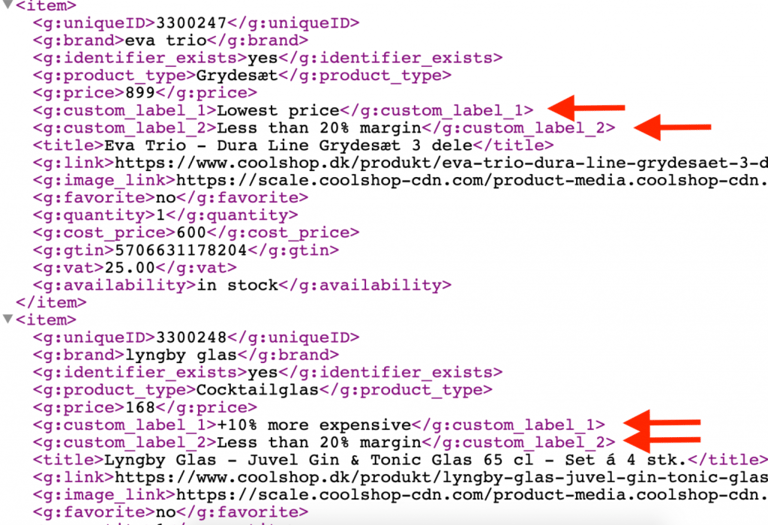Optimize your price position and perform better on Google Shopping
Google Shopping is often, it is a high-priority channel, which requires a high budget on ad-spend to get the best results
The focus on price at Google Shopping
Searchengineland.com has conducted extensive research focusing on how the product's price influences the performance of Google Shopping. The analysis was focusing on data from a single eCommerce with 700 products. The products reached more than 100,000 exposures, all in all. The idea was to increase the price by 43% to see which effect it would have on the performance. The results were, as expected, not satisfying. A drop at 70% was seen in the exposures, which is compared to the earlier periods. So, does price matter? The simple answer is: Yes.
Get more traffic with price-optimizations
The falling number of exposures is a direct consequence of the fact that Google automatically down-prioritizes products with a cost above the average market price-point. This is not that weird. In essence, Google’s raison d’etre delivers the best results possible to ensure the best user experience. This obviously means that if you position yourself too far from your competitors’ price-points, you will experience a fall in the number of exposures. To sum up, there’s a clear correlation between price points and your ability to generate traffic through Google Shopping. This is where software, such as PriceShape software, shows its true value. If you have the ability to always set a correct price-point for your products, you will absolutely succeed in Shopping. Please take a look at some of our features here: PriceShape Software and Google Shopping optimization.
The general tendency on Google Shopping
In addition to the above research conducted by Searchengineland, another analysis from the same site shows basically the same tendencies. A study was made based on 3900 products and 6 million exposures. The results were clear; Products placed under the average market price had significantly better performance than the products, which were placed above the average market price. In addition to this, the products, which had an above-average price position, also received fewer impressions, clicks, and last by not least, conversions.
Optimize your price position
Now, let’s be realistic. We aren’t saying you should place your product price-point somewhere at the bottom. What we’re saying is; Follow the market. Unless you’re consciously underbidding the market in an attempt to conquer it, by using introductory-price points or some price skimming, you should place your price point around the middle position in most cases. Online shops need revenue and black numbers instead of red.
So, it’s unnecessary to be cheaper than all of your competitors, but prices ranging in the middle region are favorable. As seen in the Searchengineland article, the way to get exposures and higher CTR, CPC, and conversions are by having the right price-point.
This is where competitive pricing software comes into play again. Imagine having the ability to not worry about which kind of low-baller offer your competitors will have this week and how much revenue your will lose to their lower than average price points since your prices are automatically updated. (Don’t worry; we’ve put in fail-safes if errors occur)
Now, all of this could indicate that you should go below your competitors' price position. This is, for more than one reason, not the favorite thing to do. As we’ve already mentioned, webshops need revenue. In addition to this, you’ll want to follow the market as long as there’s competition out there. Sometimes you want to avoid placing specific products on Google Shopping, sometimes you want to have a higher than average market price, and sometimes you want to have the highest price-point since you’re the last shop with those specific items left. Options are endless, and we can help you optimize, specify and get more out of your Shopping-account.
Things we recommend;
- Identify your margin cost on all products.
- Adapt your pricing-strategies from your product-cost margins. The lower your margin is, the more room you have for flexibility in your pricing-strategies.
- Implement margin-cost in your Google Shopping strategy using custom labels and your product margin.

This is how you place your Google Shopping budget where it makes sense. That is, specifically, where your prices are the most competitive – giving the best conditions for optimal performance.
We can help you optimize your price position at Google Shopping to be competitive in the market. All you have to do is to send your Shopping feed in our direction. Then we will take care of the rest and identify where in the market you are competitive.

